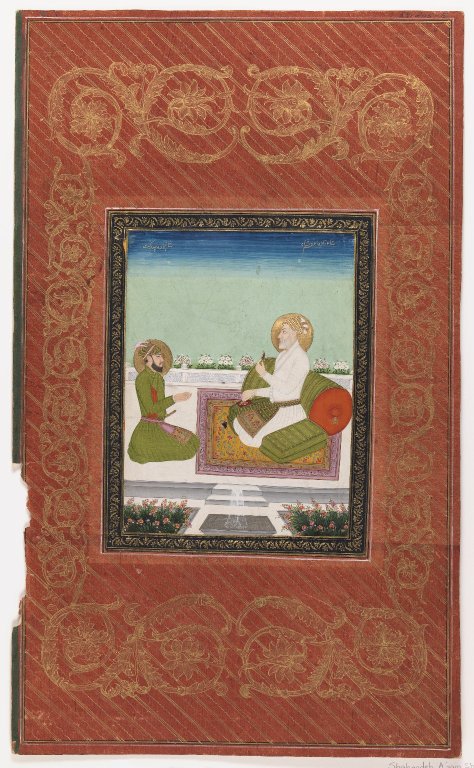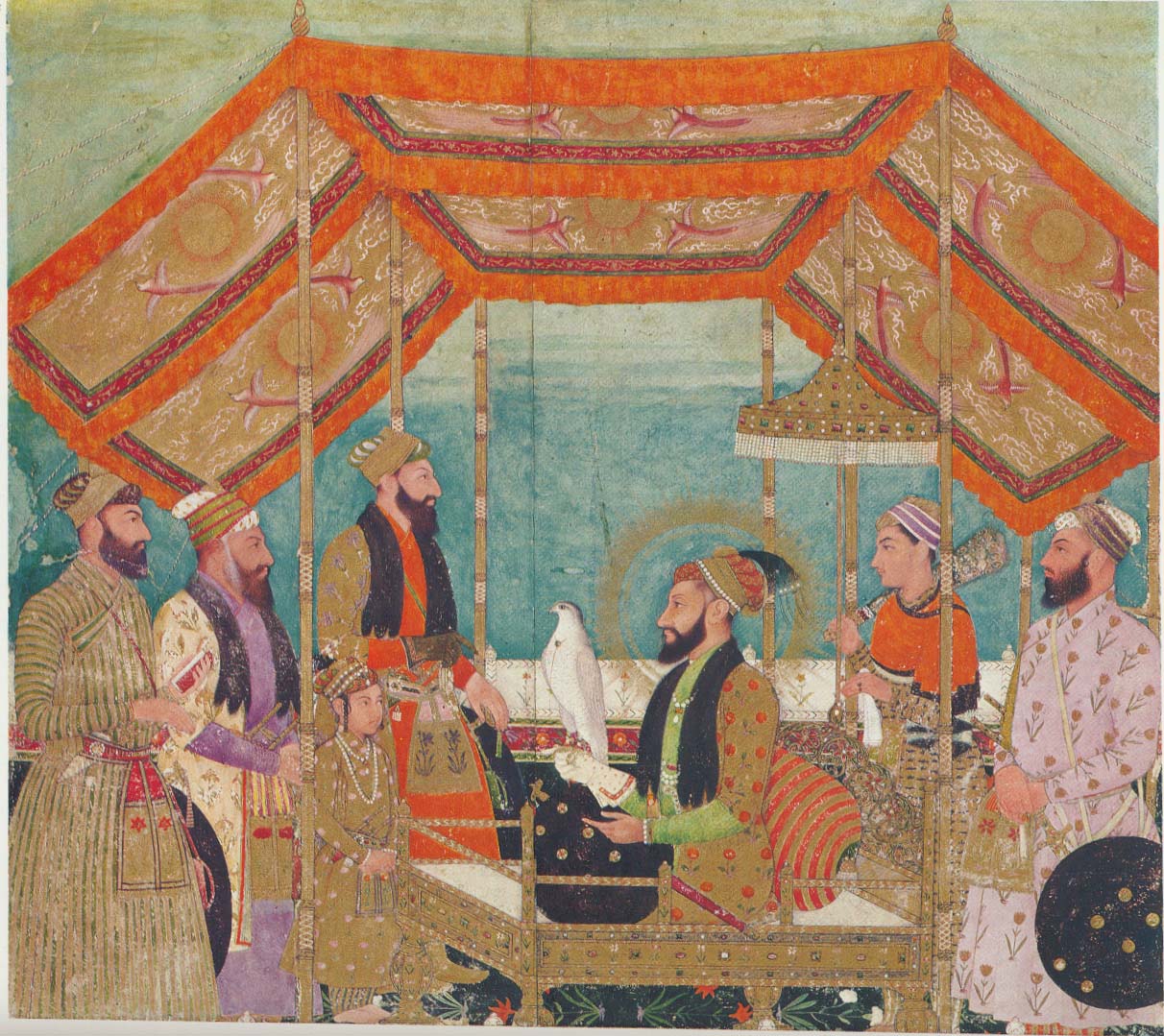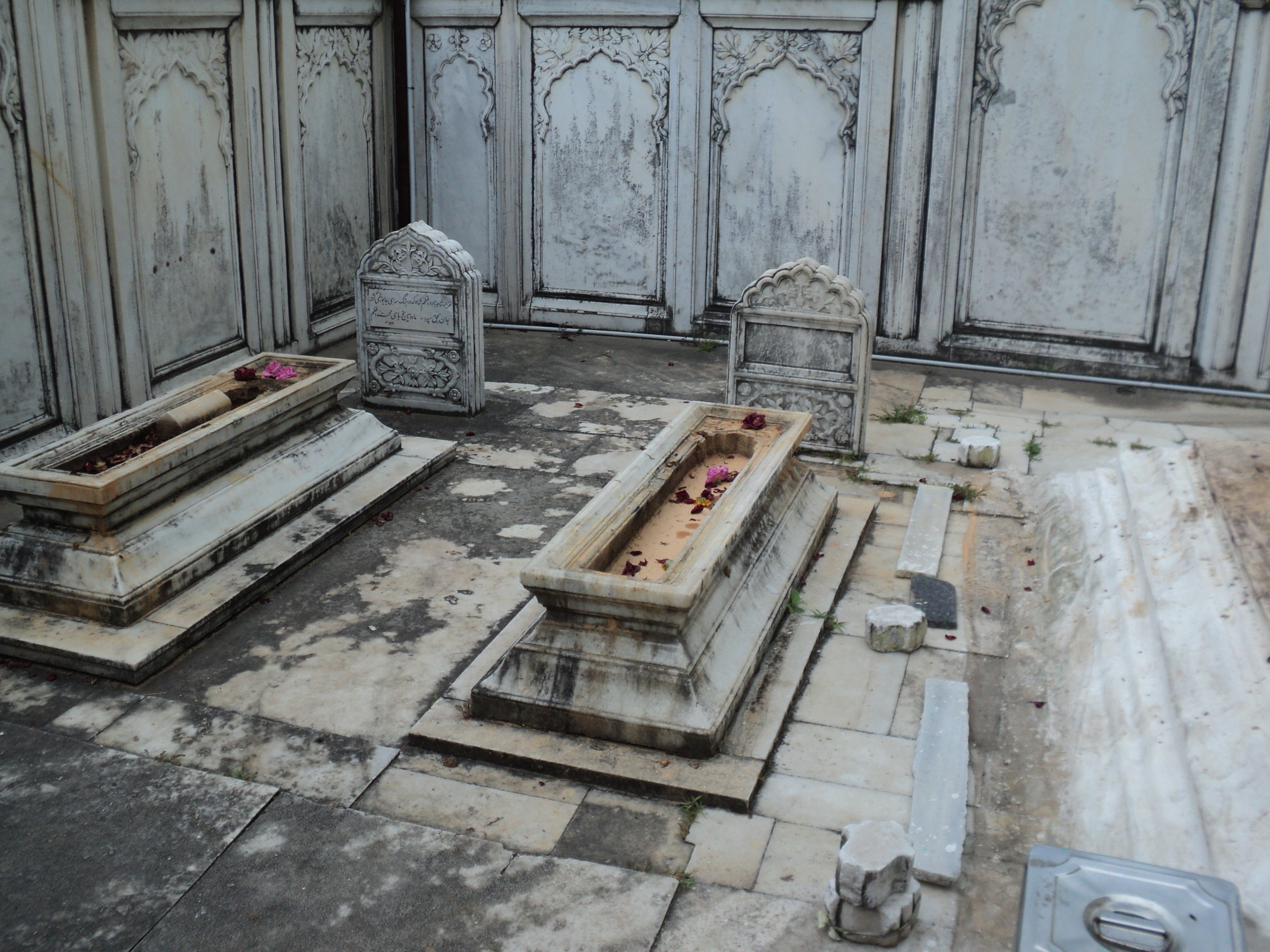Azam Shah on:
[Wikipedia]
[Google]
[Amazon]
Qutb-ud-Din Muhammad Azam (28 June 1653 – 20 June 1707), commonly known as Azam Shah, was briefly the
 In the year 1685 Aurangzeb dispatched his son Muhammad Azam Shah with a force of nearly 50,000 men to capture Bijapur Fort and defeat Sikandar Adil Shah the ruler of Bijapur who refused to be a vassal. The Mughals led by Muhammad Azam Shah could not make any advancements upon Bijapur Fort mainly due to the superior usage of cannon batteries on both sides. Outraged by the stalemate Aurangzeb himself arrived on 4 September 1686 and commanded the
In the year 1685 Aurangzeb dispatched his son Muhammad Azam Shah with a force of nearly 50,000 men to capture Bijapur Fort and defeat Sikandar Adil Shah the ruler of Bijapur who refused to be a vassal. The Mughals led by Muhammad Azam Shah could not make any advancements upon Bijapur Fort mainly due to the superior usage of cannon batteries on both sides. Outraged by the stalemate Aurangzeb himself arrived on 4 September 1686 and commanded the
 In third week of February 1707 in a bid to prevent a war of succession, Aurangzeb separated Azam and his younger half-brother, Kam Baksh, whom Azam particularly loathed. He sent Azam to Malwa and Kam Baksh to Bijapur. A few days before his death he wrote farewell letters to Azam. The next morning, Azam who had tarried outside
In third week of February 1707 in a bid to prevent a war of succession, Aurangzeb separated Azam and his younger half-brother, Kam Baksh, whom Azam particularly loathed. He sent Azam to Malwa and Kam Baksh to Bijapur. A few days before his death he wrote farewell letters to Azam. The next morning, Azam who had tarried outside  His grave along with that of his wife, lies in the
His grave along with that of his wife, lies in the
Mughal emperor
The Mughal emperors ( fa, , Pādishāhān) were the supreme heads of state of the Mughal Empire on the Indian subcontinent, mainly corresponding to the modern countries of India, Pakistan, Afghanistan and Bangladesh. The Mughal rulers styled ...
who reigned from 14 March 1707 to 20 June 1707. He was the third son of the sixth Mughal emperor Aurangzeb
Muhi al-Din Muhammad (; – 3 March 1707), commonly known as ( fa, , lit=Ornament of the Throne) and by his regnal title Alamgir ( fa, , translit=ʿĀlamgīr, lit=Conqueror of the World), was the sixth emperor of the Mughal Empire, ruling ...
and his chief consort Dilras Banu Begum.
Azam was appointed as the heir-apparent
An heir apparent, often shortened to heir, is a person who is first in an order of succession and cannot be displaced from inheriting by the birth of another person; a person who is first in the order of succession but can be displaced by the b ...
(''Shahi Ali Jah'') to his father on 12 August 1681 and retained that position until Aurangzeb's death. During his long military career, he served as the viceroy of Berar Subah, Malwa
Malwa is a historical region, historical list of regions in India, region of west-central India occupying a plateau of volcanic origin. Geologically, the Malwa Plateau generally refers to the volcanic plateau, volcanic upland north of the Vind ...
, Bengal
Bengal ( ; bn, বাংলা/বঙ্গ, translit=Bānglā/Bôngô, ) is a geopolitical, cultural and historical region in South Asia, specifically in the eastern part of the Indian subcontinent at the apex of the Bay of Bengal, predom ...
, Gujarat
Gujarat (, ) is a state along the western coast of India. Its coastline of about is the longest in the country, most of which lies on the Kathiawar peninsula. Gujarat is the fifth-largest Indian state by area, covering some ; and the nin ...
and the Deccan
The large Deccan Plateau in southern India is located between the Western Ghats and the Eastern Ghats, and is loosely defined as the peninsular region between these ranges that is south of the Narmada river. To the north, it is bounded by t ...
. Azam ascended the Mughal
Mughal or Moghul may refer to:
Related to the Mughal Empire
* Mughal Empire of South Asia between the 16th and 19th centuries
* Mughal dynasty
* Mughal emperors
* Mughal people, a social group of Central and South Asia
* Mughal architecture
* Mug ...
throne in Ahmednagar
Ahmednagar (), is a city located in the Ahmednagar district in the state of Maharashtra, India, about 120 km northeast of Pune and 114 km from Aurangabad. Ahmednagar takes its name from Ahmad Nizam Shah I, who founded the town in 1 ...
upon the death of his father on 14 March 1707. However, he and his three sons, Bidar Bakht
Muhammad Bidar Bakht ( ur, ; 4 August 1670 – 20 June 1707) was a Mughal prince. His father, Muhammad Azam Shah, briefly reigned as Mughal emperor in 1707. Bidar was noted for being a gallant, skilful and successful general and was regarded as ...
, Jawan Bakht and Sikandar Shan, were later defeated and killed by Azam Shah's older half-brother, Shah Alam (later crowned as Bahadur Shah I
Bahadur Shah I (14 October 1643 – 27 February 1712), also known as Muhammad Mu'azzam and Shah Alam I. was the eighth Mughal Emperor who ruled from 1707 until his death in 1712. In his youth, he conspired to overthrow his father Aurangzeb, t ...
), during the Battle of Jajau on 20 June 1707.
Early life
Birth
Qutb-ud-Din Muhammad Azam was born on 28 June 1653 inBurhanpur
Burhanpur'' is a historical city in the Indian state of Madhya Pradesh. It is the administrative seat of Burhanpur District. It is situated on the north bank of the Tapti River and northeast of city of Mumbai, southwest of the state's cap ...
to Prince Muhi-ud-Din (later known as 'Aurangzeb' upon his accession) and his first wife and chief consort Dilras Banu Begum. His mother, who died four years after giving birth to him, was the daughter of Mirza Badi-uz-Zaman Safavi
Badi-uz-Zaman Safavi (died 1659) was a prince of the Safavid dynasty of Persia and a powerful ''amir'' at the Mughal court during Emperor Shah Jahan's reign. He is better known by the title Shahnawaz Khan or Mirza Deccan. Shahnawaz Khan was the fa ...
(titled Shah Nawaz Khan) and a princess of the prominent Safavid dynasty of Persia
Iran, officially the Islamic Republic of Iran, and also called Persia, is a country located in Western Asia. It is bordered by Iraq and Turkey to the west, by Azerbaijan and Armenia to the northwest, by the Caspian Sea and Turkme ...
. Therefore, Azam was not only a Timurid from his father's side, but also had in him the royal blood of the Safavid dynasty, a fact which Azam was extremely proud of and after the death of his younger brother, Prince Muhammad Akbar, the only son of Aurangzeb who could boast of being of the purest blood.
Azam's other half-brothers, Shah Alam (later Bahadur Shah I
Bahadur Shah I (14 October 1643 – 27 February 1712), also known as Muhammad Mu'azzam and Shah Alam I. was the eighth Mughal Emperor who ruled from 1707 until his death in 1712. In his youth, he conspired to overthrow his father Aurangzeb, t ...
) and Muhammad Kam Bakhsh being the sons of inferior and Hindu wives of Aurangzeb. According to Niccolao Manucci
Niccolao Manucci (19 April 1638 – 1717) was a Venetian writer, a self-taught physician, and traveller, who wrote accounts of the Mughal Empire supposedly first-hand but with many details now considered doubtful. He also documented folk beliefs ...
, the courtiers were very impressed by Azam's royal Persian ancestry and the fact that he was the grandson of Shah Nawaz Khan Safavi.
Character
As Azam grew up, he was distinguished for his wisdom, excellence, and chivalry. Aurangzeb used to be extremely delighted with his son's noble character and excellent manners, and thought of him as his comrade rather than his son. He often used to say, "between this pair of matchless friends, a separation is imminent." Azam's siblings included his older sisters, the princesses: Zeb-un-Nissa, Zinat-un-Nissa, Zubdat-un-Nissa and his younger brother, Prince Muhammad Akbar.Personal life
Azam was first married on 13 May 1668 to an Ahom princess, Ramani Gabharu, whose name was changed to Rahmat Bano Begum. She was the daughter of the Ahom king, Swargadeo Jayadhwaj Singh, and the marriage was a political one. On 3 January 1669, Azam married his cousin, Princess Jahanzeb Bano Begum, the daughter of his eldest uncle Crown Prince Dara Shikoh and his beloved wife Nadira Bano Begum. Jahanzeb was his chief wife and his favorite wife, whom he loved dearly. She gave birth to her eldest son on 4 August 1670. His grandfather Aurangzeb named him 'Bidar Bakht'. Aurangzeb, throughout his life, always loved the three of Azam and Jahanzeb (who is his favorite daughter-in-law) and Prince Bidar Bakht, a brave and successful general. Bidar Bakht was also Aurangzeb's favorite grandson. Azam's third marriage was fixed with Iran Dukht Rahmat Bano (Pari Bibi), daughter of Aurangzeb's maternal uncleShaista Khan
Mirza Abu Talib (22 November 1600 – 1694), better known as Shaista Khan, was a general and the subahdar of Mughal Bengal. A maternal uncle to the emperor Aurangzeb, he acted as a key figure during his reign. Shaista Khan initially governed ...
. However, the marriage could not take place due to the sudden death of Pari Bibi in Dhaka
Dhaka ( or ; bn, ঢাকা, Ḍhākā, ), formerly known as Dacca, is the capital and largest city of Bangladesh, as well as the world's largest Bengali-speaking city. It is the eighth largest and sixth most densely populated city ...
in 1678. In her memory, a mazar (mausoleum)
A ''mazār'' ( ar, مزار), or ''darīh'' () in the Maghreb, is a mausoleum or shrine in some places of the world, typically that of a saint or notable religious leader. Medieval Arabic texts may also use the words ''mašhad'' or ''maqām'' ...
was constructed in Fort Aurangabad (now Lalbagh Fort) in Dhaka.
As part of a political alliance, Azam later married his third (and last) wife, Shahar Bano Begum (Padshah Bibi), in 1681. She was a princess of the Adil Shahi dynasty and the daughter of the ruler Ali Adil Shah II. Despite Bijapur and his other marriages, Azam's love for Jahanzeb remained unchanged. Because when she died in 1705, he was filled with great sadness and despair which darkened the rest of his life.
Siege of Bijapur
 In the year 1685 Aurangzeb dispatched his son Muhammad Azam Shah with a force of nearly 50,000 men to capture Bijapur Fort and defeat Sikandar Adil Shah the ruler of Bijapur who refused to be a vassal. The Mughals led by Muhammad Azam Shah could not make any advancements upon Bijapur Fort mainly due to the superior usage of cannon batteries on both sides. Outraged by the stalemate Aurangzeb himself arrived on 4 September 1686 and commanded the
In the year 1685 Aurangzeb dispatched his son Muhammad Azam Shah with a force of nearly 50,000 men to capture Bijapur Fort and defeat Sikandar Adil Shah the ruler of Bijapur who refused to be a vassal. The Mughals led by Muhammad Azam Shah could not make any advancements upon Bijapur Fort mainly due to the superior usage of cannon batteries on both sides. Outraged by the stalemate Aurangzeb himself arrived on 4 September 1686 and commanded the Siege of Bijapur
The siege of Bijapur began in March 1685 and ended in September 1686, with Mughal victory. The siege began when Aurangzeb dispatched his son, Muhammad Azam Shah, with a force of nearly 50,000 men to capture Bijapur Fort and defeat Sikandar Adil ...
after eight days of fighting and the Mughals were victorious.
Subahdar of Bengal
Prince Azam was appointed the governor (''Subahdar
Subahdar, also known as Nazim or in English as a "Subah", was one of the designations of a governor of a Subah (province) during the Khalji dynasty of Bengal, Mamluk dynasty (Delhi), Khalji dynasty, Tughlaq dynasty, Mughal era ( of India who w ...
'') of Berar Subah, Malwa
Malwa is a historical region, historical list of regions in India, region of west-central India occupying a plateau of volcanic origin. Geologically, the Malwa Plateau generally refers to the volcanic plateau, volcanic upland north of the Vind ...
and Bengal
Bengal ( ; bn, বাংলা/বঙ্গ, translit=Bānglā/Bôngô, ) is a geopolitical, cultural and historical region in South Asia, specifically in the eastern part of the Indian subcontinent at the apex of the Bay of Bengal, predom ...
from 1678 to 1701 upon the death of his predecessor, Azam Khan Koka. He successfully captured the Kamrup region
Kamrup is the modern region situated between two rivers, the Manas and the Barnadi in Western Assam, with the same territorial extent as the Colonial and post-Colonial " Undivided Kamrup district". It was the capital region of two of the th ...
in February 1679. He founded the incomplete Lalbagh Fort
Lalbagh Fort ( bn, লালবাগ কেল্লা) is a fort in the old city of Dhaka, Bangladesh. Its name is derived from its neighborhood Lalbagh, which means Red Garden. The term Lalbagh refers to reddish and pinkish architecture from ...
in Dacca. During his administration, Mir Maula was appointed '' Diwan'' and Muluk Chand as ''Huzur-Navis'' for revenue collection. Prince Azam was recalled by Aurangzeb and left Dacca on 6 October 1679. Marathas
The Marathi people (Marathi: मराठी लोक) or Marathis are an Indo-Aryan ethnolinguistic group who are indigenous to Maharashtra in western India. They natively speak Marathi, an Indo-Aryan language. Maharashtra was formed as a ...
; Bengal went under administration of the Nawabs of Murshidabad.
He later became the governor of Gujarat
Gujarat (, ) is a state along the western coast of India. Its coastline of about is the longest in the country, most of which lies on the Kathiawar peninsula. Gujarat is the fifth-largest Indian state by area, covering some ; and the nin ...
from 1701 to 1706.
Accession
 In third week of February 1707 in a bid to prevent a war of succession, Aurangzeb separated Azam and his younger half-brother, Kam Baksh, whom Azam particularly loathed. He sent Azam to Malwa and Kam Baksh to Bijapur. A few days before his death he wrote farewell letters to Azam. The next morning, Azam who had tarried outside
In third week of February 1707 in a bid to prevent a war of succession, Aurangzeb separated Azam and his younger half-brother, Kam Baksh, whom Azam particularly loathed. He sent Azam to Malwa and Kam Baksh to Bijapur. A few days before his death he wrote farewell letters to Azam. The next morning, Azam who had tarried outside Ahmednagar
Ahmednagar (), is a city located in the Ahmednagar district in the state of Maharashtra, India, about 120 km northeast of Pune and 114 km from Aurangabad. Ahmednagar takes its name from Ahmad Nizam Shah I, who founded the town in 1 ...
instead of proceeding to Malwa, arrived at the imperial camp and conveyed his father's body for burial at his tomb at Daulatabad. Azam Shah proclaimed himself Emperor
An emperor (from la, imperator, via fro, empereor) is a monarch, and usually the sovereign ruler of an empire or another type of imperial realm. Empress, the female equivalent, may indicate an emperor's wife ( empress consort), mother ( e ...
and seized the throne. In the political struggles following the disputed succession, he and his son Prince Bidar Bakht were defeated and killied in Battle of Jajau on the 20th of June 1707 against elder half-brother, Prince Muhammad Mu'azzam, who succeeded their father to the Mughal
Mughal or Moghul may refer to:
Related to the Mughal Empire
* Mughal Empire of South Asia between the 16th and 19th centuries
* Mughal dynasty
* Mughal emperors
* Mughal people, a social group of Central and South Asia
* Mughal architecture
* Mug ...
throne. Azam Shah is said to have been killed by an arrow fired by Guru Gobind Singh
Guru Gobind Singh (; 22 December 1666 – 7 October 1708), born Gobind Das or Gobind Rai the tenth Sikh Guru, a spiritual master, warrior, poet and philosopher. When his father, Guru Tegh Bahadur, was executed by Aurangzeb, Guru Gobind ...
dargah
A dargah ( fa, درگاه ''dargâh'' or ''dargah'', Turkish: ''dergâh'', Hindustani: ''dargah'' दरगाह درگاہ, bn, দরগাহ ''dorgah'') is a shrine or tomb built over the grave of a revered religious figure, often a ...
complex of Sufi saint, Sheikh Zainuddin, at Khuldabad near Aurangabad
Aurangabad ( is a city in the Indian state of Maharashtra. It is the administrative headquarters of Aurangabad district and is the largest city in the Marathwada region. Located on a hilly upland terrain in the Deccan Traps, Aurangabad is the ...
, which also houses the tomb of Aurangzeb to the west.Ancestry
Full title
''Padshah-i-Mumalik Abu'l Faaiz Qutb-ud-Din Muhammad Azam Shah-i-Ali Jah Ghazi''References
{{DEFAULTSORT:Muhammad Azam Shah Mughal emperors Mughal princes Medieval India 1653 births 1707 deaths Subahdars of Bengal Subahdars of Gujarat